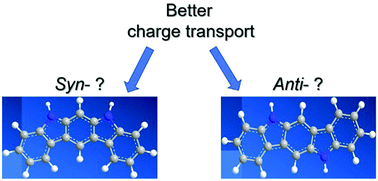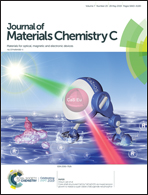Which isomer is better for charge transport: anti- or syn-?†
Abstract
Organic semiconductors have been a large family of materials that have attracted wide attention in the last few decades due to their special features of large-scale synthesis, low-cost fabrication, flexible devices, etc. The introduction of functional groups on the main building block makes the chemical synthesis result in various isomers, which are difficult to be separated from each other. Specifically, it is still contradictive to conclude which kind of isomer can bring about a better performance: anti-, syn-, or the anti-/syn-mixture of isomers? In this review, isomerically pure molecules obtained by direct controlled synthesis are introduced, and the solvent-dependent crystallization to distinguish some anti-/syn-isomers is also discussed. The charge transport properties of the molecules of anti-, syn-, and anti-/syn-mixture are summarized to find general clues for designing high-performance organic semiconductors via control of anti-/syn-isomerization. A review of theoretical data suggests that syn-isomers are likely to have relatively weaker hole-vibrational coupling as compared to anti-isomers. However, the hole transfer integrals are shown to have less dependency on anti-/syn-isomerization for charge transport channels along parallel packed molecules. In contrast, higher minimum hole transfer integrals for transverse dimers are revealed for syn-isomers.

- This article is part of the themed collection: Recent Review Articles


 Please wait while we load your content...
Please wait while we load your content...